32 Golden European Puff Pastries That Melt in Your Mouth
Artisan European puff pastries represent a delectable culinary art form that transforms simple ingredients into extraordinary gastronomic experiences.
Bakers craft these delicate creations with meticulous precision and generations of inherited techniques.
Layers of buttery dough transform into impossibly light, crisp shells through careful folding and temperature control.
Pastry masters manipulate flour, butter, and technique to produce ethereal textures that melt on your tongue.
Regional traditions infuse each pastry with unique characteristics reflecting local ingredients and cultural preferences.
Sophisticated yet approachable, these treats bridge rustic home cooking and refined professional pastry making.
The intricate process demands patience, skill, and a deep understanding of ingredient interactions.
Uncover the magic behind these 32 artisan European puff pastries that will revolutionize your baking perspective:
Artisan European Puff Pastries With Heavenly Layers
European bakers perfect the art of puff pastry, light, airy, and endlessly flaky. Enjoy these treats plain, filled, or topped for maximum indulgence.
Pastel De Belem
Pastel de Belem are legendary Portuguese egg custard tarts originating from Lisbon's Jeronimos monastery, with a singular recipe dating back to 1837.
Monks first crafted these delicate pastries using a unique blend of milk, eggs, sugar, lemon, and cinnamon in a crisp, flaky shell.
Strict naming conventions dictate that only tarts produced at Fabrica Pasteis de Belem can bear the official "pastel de Belem" title, while similar versions are called "pastel de nata".
The Guardian recognized these tarts among the world's top 50 culinary experiences in 2009.
Visitors can enjoy them hot or cold, with their creamy custard and caramelized surface attracting global food lovers.
Portuguese bakeries carefully preserve the original recipe, maintaining its authentic flavor and texture.
Pastel De Nata
Pastel de nata are Portuguese egg custard tarts with a crispy, flaky shell and silky smooth filling that originated from Catholic monasteries in Lisbon during the 18th century.
Monks first created these treats using surplus egg yolks from wine clarification and fabric starching processes.
Bakers near Santa Maria de Belem monastery began selling the tarts commercially, quickly gaining widespread popularity.
Authentic pastel de nata require a perfectly balanced custard that is not overly sweet and avoids lemon or vanilla flavors.
Cinnamon sprinkled on top enhances the tart's traditional taste and complexity.
Serving these golden-brown pastries alongside a hot cup of coffee elevates the entire sensory experience.
Portuguese bakeries continue to preserve the original recipe with meticulous attention to detail.
Franzbrotchen
Franzbrotchen are sweet German pastries originating in Hamburg with a unique layered, buttery texture influenced by French baking techniques during Napoleon's occupation.
Bakers create these treats by folding dough multiple times and coating it with butter, sugar, and cinnamon for a rich, sticky finish.
Traditional ingredients include flour, butter, milk, yeast, and sugar, with optional additions like raisins or chocolate.
Hamburg restaurants often serve these pastries alongside coffee as a popular morning or afternoon snack.
German bakeries prepare franzbrotchen by carefully glazing the dough to achieve a caramelized, crisp exterior.
Cinnamon remains the most classic filling, providing a warm, aromatic flavor.
Pastry lovers appreciate the delicate, multi-layered structure that distinguishes these treats from standard sweet breads.
Modern variations now exist throughout Germany, expanding the pastry's original Hamburg roots.
Topfenstrudel
Topfenstrudel are traditional Austrian pastries featuring delicate, paper-thin dough wrapped around a creamy quark cheese filling.
Austrian bakers craft this signature dessert by carefully stretching dough until almost transparent, then generously spreading a smooth mixture of mild quark cheese inside.
Vanilla and lemon subtly enhance the filling's gentle sweetness, while optional raisins, apricots, or peaches add bursts of fruity flavor.
Raisins and fresh fruits provide textural contrast against the soft cheese center.
Bakers fold the gossamer-thin dough with expert precision, creating multiple delicate layers.
Skilled hands roll and tuck the pastry to ensure an even distribution of filling.
Golden brown and crispy when baked, topfenstrudel emerges from ovens with a beautifully caramelized exterior.
Served warm, this dessert represents a perfect balance of creamy interior and crunchy pastry shell.
Travesseiros
Travesseiros are delicate Portuguese pastries shaped like pillows with a crispy puff pastry exterior and a luscious almond and egg yolk cream filling.
Originating in Sintra during the 1940s, these sweet treats were first created at Piriquita bakery, which still guards the original recipe as a closely held secret.
Skilled bakers craft each pastry with precision, carefully layering thin, flaky pastry around the rich, creamy interior.
Travesseiros are best enjoyed fresh from the oven, with a light dusting of powdered sugar that adds a delicate sweetness.
Their unique shape resembles a small cushion, making them visually appealing as well as delicious.
Locals and tourists alike seek out these iconic pastries as a must-try dessert in Portugal.
Sintra's famous bakery continues to delight visitors with these traditional sweet treats.
Joulutorttu
Joulutorttu are star-shaped Finnish Christmas pastries with a crispy puff pastry exterior and sweet plum jam filling that symbolize holiday joy.
Finnish families traditionally bake these delicate treats during December celebrations, carefully folding pastry corners into distinctive pinwheel shapes.
Bakeries and home kitchens across Finland create these golden-brown pastries with thin, flaky layers of buttery dough.
Powdered sugar generously dusts the top, adding a festive touch to the already elegant dessert.
Swedish regions also embrace this Christmas delicacy, sharing cultural culinary traditions.
Each pastry requires precise folding techniques to achieve its characteristic star design.
Plum jam provides a rich, sweet center that complements the crisp pastry perfectly.
Mille-Feuille
Mille-feuille are delicate French pastries featuring multiple crisp, buttery layers of puff pastry stacked with creamy fillings and elegantly glazed on top.
French bakers craft these stunning desserts by carefully alternating thin, crisp pastry sheets with silky custard, whipped cream, or fruit purees.
Historical records trace this elegant treat back to a 1651 cookbook by La Varenne, where early versions first emerged in French culinary traditions.
Confectioners create the dessert's signature texture by repeatedly folding and baking pastry dough to produce extraordinarily flaky layers.
Pastry chefs often decorate mille-feuille with powdered sugar, chocolate drizzles, or smooth icing in vanilla, chocolate, or almond flavors.
Contrary to popular belief, its alternative name "Napoleon" references Naples, Italy, not the famous French emperor.
Appelflap
Appelflaps are crispy, golden-brown Dutch pastries bursting with sweet apple and raisin filling wrapped in flaky layers of buttery dough.
Originating in Netherlands, these traditional treats feature a generous sprinkle of sugar granules that create a delightful crunch with every bite.
Bakeries and coffee shops across the country serve these warm pastries as a popular breakfast item or afternoon snack.
Dutch families often enjoy appelflaps during morning coffee or as a quick dessert.
Cinnamon and sugar blend perfectly inside the pastry, creating a warm, comforting flavor profile.
Raisins add extra sweetness and texture to the apple mixture.
Pastry dough is carefully folded and sealed to hold the rich filling securely.
Each appelflap delivers a satisfying combination of crisp exterior and soft, spiced interior.
Pirukas
Pirukas are savory Estonian pastry pockets bursting with rich flavor and cultural significance that blend traditional ingredients into compact, portable meals.
Estonian families traditionally prepare these handheld snacks using either flaky puff pastry or standard bread dough with versatile fillings.
Small versions come in baked and fried styles, while larger pirukas focus on classic combinations of cabbage, meat, and carrots.
Meat and ham remain popular filling choices for smaller versions.
Rice and mushrooms also provide delicious alternative ingredients for these compact treats.
Street vendors and home kitchens across Estonia frequently serve these convenient pastries.
Pirukas represent a simple yet satisfying component of Estonian food culture.
Pastel De Chaves
Pastel de Chaves are iconic Portuguese savory pastries originating from northern Portugal's Chaves region, characterized by their distinctive clam-shaped puff pastry shell filled with seasoned minced veal, bread, and onions.
Teresa Feliz Barreira pioneered these unique pastries in 1862, establishing Casa do Antigo Pasteleiro as their first commercial venue.
Her original recipe remained exclusive for 75 years before other local bakeries began producing similar versions.
Regional pride drove Chaves to legally protect the pastry, ensuring only this specific municipality could officially manufacture and sell authentic pastel de Chaves.
Traditional preparation involves carefully crafting a crisp, golden exterior that encases a rich, flavorful meat filling.
Regional culinary traditions and meticulous preparation techniques contribute to the pastel de Chaves' enduring popularity.
Historical preservation and strict geographical indication have maintained the pastry's authentic character and cultural significance.
Jesuitas
Jesuitas are triangular Portuguese pastry delights originating from monastic kitchens with intricate layers of crisp puff pastry generously brushed with smooth egg custard and crowned with sweet meringue.
Religious institutions first crafted these elegant treats during traditional baking practices in Portugal.
Portuguese bakers carefully fold thin pastry sheets to create distinctive triangular shapes.
Egg custard provides a rich, creamy interior that complements the crisp pastry texture.
Meringue topping adds a light, sugary finish to the dessert.
Sweet and delicate, these pastries reflect Portugal's rich culinary heritage.
Bakeries across Portugal continue preparing jesuitas using time-honored techniques.
Religious inspiration meets culinary artistry in this beloved national sweet.
Tartlets With Chicken And Asparagus (Hns I Asparges)
Hns i asparges tartlets showcase Denmark's elegant culinary tradition through delicate puff pastry shells filled with a smooth chicken and asparagus mixture.
Danish home cooks perfected this recipe in the early 20th century as a versatile dish served during special gatherings.
Small pastry shells provide a crisp foundation for tender chicken pieces and fresh asparagus.
Creamy ingredients blend seamlessly within the flaky pastry base.
Danes typically serve these tartlets as appetizers or light main courses during festive events.
Traditional buffet tables frequently feature these miniature tarts.
Seasonal asparagus highlights the freshness of this classic Danish recipe.
Palmiers
Palmiers are elegant French pastries shaped like butterfly wings or elephant ears, crafted from buttery puff pastry generously coated with caramelized sugar.
Sweet and crispy, these delicate treats originate from French bakeries and feature a simple yet ingenious design of folded pastry layers.
Professional bakers create palmiers by rolling puff pastry with sugar, then slicing and baking until golden brown and caramelized.
Parisian bakeries traditionally serve palmiers as light desserts or afternoon snack accompaniments.
French pastry chefs carefully fold the dough to achieve the signature heart or palm leaf shape.
Elegant and lightweight, palmiers pair perfectly with coffee or tea.
French baking techniques transform basic ingredients into a stunning sweet pastry experience.
Flores De Hojaldre
Flores de hojaldre are exquisite Spanish pastries from Alcala de Henares featuring intricate flower-shaped puff pastry crafted with elegant rolling techniques.
Bakers skillfully transform basic ingredients into delicate rose-like desserts with stunning visual appeal.
Spanish bakeries create these treats using versatile techniques that allow both sweet and savory variations.
Sweet versions showcase ingredients like apples, pears, fruit jam, cinnamon, honey, and chocolate, while savory options include zucchini, salmon, cheese, bacon, and mushrooms.
Light and flaky textures define the pastry's signature characteristic.
Powdered sugar often adorns the surface, enhancing its delicate appearance.
Traditional serving recommendations include pairing these pastries with a warm coffee.
Banket
Banket is a Dutch holiday pastry featuring crisp, flaky puff pastry wrapped around rich almond paste, traditionally served during Christmas celebrations.
Sweet almond filling creates a luxurious core inside delicate, layered pastry that crumbles with each bite.
Dutch families often prepare this treat as a festive dessert, carefully rolling the pastry to encase smooth almond paste.
Bakers brush the golden-brown pastry with egg wash for a glossy finish and sometimes add fruit jam for extra flavor.
Powdered sugar dusts the top, providing a sweet, elegant touch that complements the pastry's buttery texture.
Small cherries or sliced almonds occasionally garnish the surface for visual appeal.
Christmas tables frequently showcase banket alongside hot coffee, making it a beloved seasonal indulgence.
Netherlands considers this pastry a cherished winter tradition shared among family and friends.
Eccles Cake
Eccles cakes are flaky pastry delights originating from Manchester, England, featuring a crisp golden-brown exterior crafted from buttery puff pastry.
Small round discs packed with sweet dried currants and brown sugar create a rich, caramelized filling that crumbles delicately with each bite.
British bakeries and home kitchens traditionally serve these treats alongside strong black tea or crumbly Lancashire cheese.
Honey glaze gives the pastry its signature shiny, caramelized finish that hints at deep flavor complexity.
Bakers roll the pastry thin to ensure maximum crispness and delicate texture.
Eccles cakes date back to the 1700s in northwest England, representing a classic regional sweet.
Sugar and spices like cinnamon enhance the dried fruit's natural sweetness.
Local bakers continue to prepare these traditional pastries using generations-old techniques.
Pate Lorrain
Pate lorrain stands as a classic French pastry-encased meat delicacy originating from northeastern France's Lorraine region.
French culinary traditions demand a precise blend of pork and veal marinated in a rich wine and herb mixture.
Shallots, thyme, parsley, and bay leaves infuse deep flavors into the carefully sliced meat before wrapping.
Baccarat commune claims special connection to this elegant meat pie preparation.
Chefs meticulously enclose the seasoned meat within delicate, buttery puff pastry layers.
Modern variations now include alternative proteins like rabbit or chicken for diverse palate preferences.
Baking transforms the raw ingredients into a golden, crisp-crusted masterpiece.
Regional French gastronomy celebrates this sophisticated meat-filled pastry as a true representation of traditional cooking techniques.
Hojaldres De Astorga
Hojaldres de Astorga are delicate Spanish pastries from Astorga, Castilla y León, featuring layers of crisp, golden puff pastry soaked in sweet syrup.
Bakers carefully cut rectangular pastry sheets with center holes before baking them to achieve a light, crispy texture.
Traditional preparation involves precise oven-baking for exactly 10 minutes at controlled temperatures.
Spanish bakeries often create these treats using generations-old techniques passed through family lines.
Each pastry emerges with a golden-brown surface that crackles when bitten.
Regional cooks typically serve hojaldres as afternoon snacks or dessert accompaniments.
Sugar syrup gives these pastries their signature glossy finish and enhanced sweetness.
Local bakers consider the precise pastry-to-syrup ratio a critical aspect of creating perfect hojaldres.
Frigideiras
Frigideiras are flaky Portuguese pastries packed with spiced minced meat that originated in Porto during the late 18th century.
Crafted from a delicate dough, these savory treats feature a traditional blend of pork and beef mixed with aromatic onions and seasonings.
Portuguese bakers developed these pastries in 1796 at "Frigideiras do Cantinho," a famous establishment that pioneered their creation.
Experts prepare the pastries by carefully filling thin dough with seasoned meat and frying them in a pan, which explains their distinctive name.
Porto restaurants continue serving these iconic snacks as beloved street food and appetizer options.
Small in size but intense in flavor, frigideiras represent a crucial part of northern Portuguese culinary heritage.
Regional restaurants and home cooks still follow generations-old preparation techniques.
Meat-filled pastries like frigideiras showcase Portugal's rich gastronomic traditions through simple yet satisfying ingredients.
Jalousies
Jalousies are elegant French pastries featuring intricate puff pastry strips woven with jam or apple puree, mimicking the horizontal slats of traditional window shutters.
French bakers carefully craft these delicate treats by layering thin pastry bands with sweet fillings and making precise diagonal cuts across the surface.
Rectangular or triangular shapes allow bakers to create variations in presentation and size.
Traditional recipes use raspberry or apple preserves as primary fillings.
Butter-rich puff pastry provides a crisp, flaky texture that contrasts with smooth fruit centers.
Regional French bakeries often prepare jalousies using local seasonal fruit preserves.
Home bakers appreciate their relatively simple preparation method.
Elegant appearance and balanced sweet-buttery flavor make jalousies a popular French dessert.
Tortas Locas
Tortas locas are decadent Spanish pastries from Malaga that blend crispy puff pastry with silky custard and vibrant decoration.
Sweet lemon and vanilla custard forms the heart of these unique treats, nestled within layers of delicate pastry.
Egg yolk glaze adds a rich golden color and glossy sheen to each pastry's surface.
Red cherries in syrup provide a bright burst of color and tangy sweetness.
Sugar frosting creates an additional glossy finish that enhances the pastry's visual appeal.
Traditional ingredients include milk, eggs, flour, sugar, lemon, vanilla, and cinnamon.
Orange food coloring gives the glaze its distinctive warm tone.
Regional bakers craft these pastries with precise techniques passed through generations.
Niflette
Niflettes are delicate French pastry tartlets from Provins that burst with creamy sweetness and historical charm.
Regional bakers craft these treats using layered puff pastry rounds with a distinctive hole for rich pastry cream.
Medieval traditions connect niflettes to All Saints Day celebrations in Seine et Marne.
Orange blossom water sometimes enhances the cream's subtle flavor profile.
French bakeries typically prepare these seasonal pastries from mid-October to mid-November.
Egg yolks, milk, flour, and sugar form the smooth cream filling.
Bakers carefully stack pastry circles and create strategic openings for cream placement.
Hot chocolate often accompanies these golden-brown tartlets when served fresh from the oven.
Brasille
Brasille are traditional French pastries distinguished by their flaky, golden-brown puff pastry with a caramelized sugar coating.
French bakers originally crafted these delicate treats using simple bread dough and lard before Emilie Roussel transformed the recipe by introducing butter and sugar.
Light, buttery layers are carefully rolled and shaped into an elegant oval form before being brushed with beaten eggs.
Sweet granulated sugar generously coats the surface, creating a crisp, caramelized exterior during baking.
Hot coals originally provided the intense heat that gave these pastries their characteristic slightly burnt top.
Roussel's innovative technique elevated the humble bread dough into a sophisticated French pastry.
Historic records suggest the name derives from "brasier," meaning hot coals or embers.
Feuilletes Au Munster
Feuilletes au Munster are elegant French pastries that showcase Alsatian culinary excellence through delicate puff pastry layers and rich Munster cheese.
Regional bakers craft these savory treats by carefully folding buttery pastry around creamy Munster cheese and smooth creme fraiche.
Traditional preparation involves cutting pastry into precise quarters and adding carefully measured cheese portions.
Each pastry delivers a complex flavor profile balancing crisp, flaky exterior with soft, melted cheese interior.
Alsatian home cooks often prepare these pastries for special gatherings and weekend brunches.
Egg yolks help bind ingredients and create a golden, glossy surface during baking.
Munster cheese, native to northeastern France, provides a distinctively sharp and tangy flavor.
Puits D’Amour
Puits d'amour are elegant French pastries featuring layered puff pastry rings with a distinctive hollow center designed for holding sweet fillings.
Named "wells of love" in French, these delicate pastries originated in Paris during the 18th century and first appeared in Vincent De La Chapelle's culinary manuscript.
Bakers carefully stack multiple crisp pastry rings to create a tower-like structure with an open middle.
Strawberry jam, redcurrant jelly, and vanilla pastry cream serve as traditional filling options for this classic dessert.
Parisian pastry makers craft each ring with precise techniques to ensure a golden, flaky texture.
French bakeries often showcase these treats as sophisticated dessert centerpieces.
Delicate yet structured, puits d'amour represent a refined approach to French pastry making.
Sweet and intricate, these pastries embody the elegance of French dessert craftsmanship.
Costrada
Costrada stands out as a delicate Spanish pastry from Alcala de Henares, featuring layers of crisp puff pastry generously filled with smooth pastry cream and fluffy meringue.
Almonds and powdered sugar crown the dessert before baking transforms its texture into a golden, crunchy treat.
Bakers carefully roast the almonds and dry the meringue during a quick baking process.
Sweet and nutty flavors blend perfectly in each delicate bite.
Puff pastry provides a light, flaky base for the creamy filling.
Meringue adds a soft, airy texture to the dessert.
Chopped almonds bring a satisfying crunch to each slice.
Spanish bakeries often serve this elegant pastry as a special afternoon or post-dinner sweet.
Blue Cake
Blue cake celebrates Switzerland's playful work culture through a unique puff pastry tradition originating in Frutig valley.
Swiss bakeries craft this light pastry without fillings or decorations since the early 1900s.
Workers used the term "blau machen" meaning "to take a holiday" when creating this simple pastry.
Bakers prepare the thin, crisp puff pastry using basic ingredients and minimal techniques.
Regional bakeries continue the practice as a nostalgic connection to historical labor practices.
Locals enjoy the pastry as a simple reminder of work breaks and leisure time.
German language influences the pastry's interesting name and cultural significance.
Switzerland preserves this culinary tradition through ongoing bakery production.
Banbury Cake
Banbury cakes are flaky oval pastries packed with historic flavor from England's Oxfordshire region, featuring a delicate puff pastry shell bursting with sweet currants, aromatic spices, and rum.
Medieval Knights Templar introduced complex spice blends during crusade travels, inspiring this regional treat's unique recipe.
Bakers carefully craft each cake by mixing currants, grated citrus peel, and a blend of nutmeg, cinnamon, mace, and ginger.
Dark rum adds depth to the fruit filling, creating a rich taste profile that connects modern bakers to 17th-century culinary traditions.
Butter-rich pastry provides a crisp exterior that contrasts with the soft, spiced interior.
Bakeries in Banbury continue producing these traditional sweets using generations-old techniques.
Rose water enhances the cake's delicate flavor, adding a subtle floral note.
Rosquillas De Alcala
Rosquillas de Alcala are classic Spanish ring-shaped pastries crafted from delicate puff pastry and distinguished by their signature golden-yellow glaze made from egg yolks, sugar, and water.
Spanish bakeries in Alcala de Henares have perfected this traditional treat for generations.
Local bakers carefully shape the dough into rings before dipping them in a sweet, glossy coating.
Regions throughout Spain enjoy these pastries during morning breakfasts or afternoon snack times.
Puff pastry provides a light, airy texture that contrasts beautifully with the smooth, sweet glaze.
Visitors to Spain often seek out these iconic pastries as a taste of regional culinary tradition.
Sweet and elegant, rosquillas represent a delightful glimpse into Spanish regional baking culture.
Torta Diplomatica
Torta diplomatica are elegant layered desserts combining flaky puff pastry, creamy fillings, and delicate sponge cake originating from Italian aristocratic kitchens.
Rich diplomatic cream binds each layer with subtle maraschino liqueur undertones, creating a sophisticated texture and flavor profile.
Central Italian versions feature caramelized pastry and custard infused with alchermes liqueur, while Sicilian adaptations incorporate smooth ricotta.
Sweet apricot jam often provides a fruity accent between pastry layers.
Powdered sugar dusting adds final visual elegance to this complex confection.
Skilled pastry makers carefully assemble each component to achieve perfect textural harmony.
Nicanores De Bonar
Nicanores de Bonar are golden-brown puff pastry delicacies crafted with a unique daisy-shaped design in Leon, Spain.
Spanish bakers carefully prepare these treats using wheat flour, eggs, and butter in a traditional recipe dating back to 1880.
Pastry chef Nicanor Rodriguet Gonzales originally created this sweet specialty, which bears his name.
Bakers cut the dough with a distinctive flower-shaped mold before carefully baking it to achieve a perfect puffy texture.
Each pastry transforms into a crisp, light golden treat during baking.
Generous amounts of powdered sugar coat the surface, adding a sweet finishing touch.
Residents of Bonar town have celebrated this pastry for generations.
Testa Di Turco
Testa di Turco are traditional Sicilian pastries with a provocative historical origin rooted in post-Crusades cultural tensions, symbolizing triumph over Saracen enemies through culinary creativity.
Bakers craft these unique cream puffs in a distinctive turban shape, reflecting both historical conflict and gastronomic artistry.
Sicilian kitchens prepare these pastries using delicate puff pastry techniques, carefully shaping the dough to resemble a Turkish turban.
Honey often drizzles over the golden-brown surface, adding sweet complexity to the treat.
Ricotta or custard cream frequently fills the pastry's interior, creating a rich and smooth texture.
Sweet and symbolic, these pastries transform a moment of historical tension into a delicious culinary experience.
Mediterranean baking traditions shine through this complex and meaningful dessert.
What Ingredients Are Used in Traditional European Puff Pastry?
Traditional European puff pastry is made using a simple yet precise combination of ingredients:
Some recipes may include a small amount of vinegar or lemon juice to tenderize the dough and reduce gluten development, but classic puff pastry remains largely free of additional ingredients. The magic of puff pastry comes from the repeated folding and rolling (lamination) of the dough and butter layers, which create its characteristic rise and flakiness during baking.

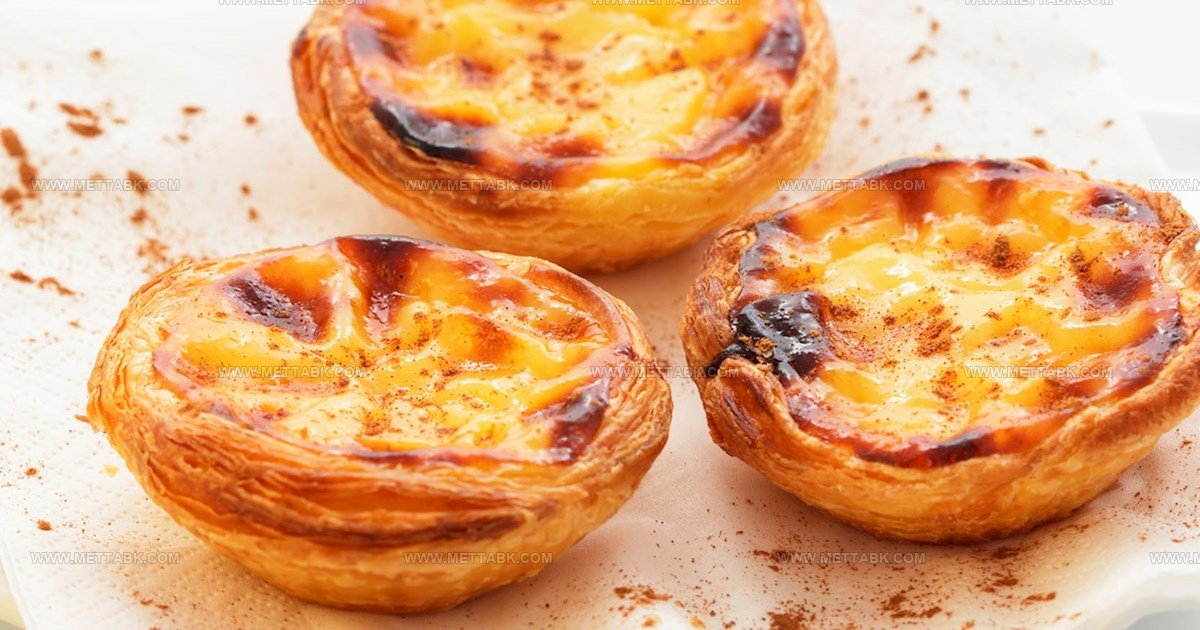
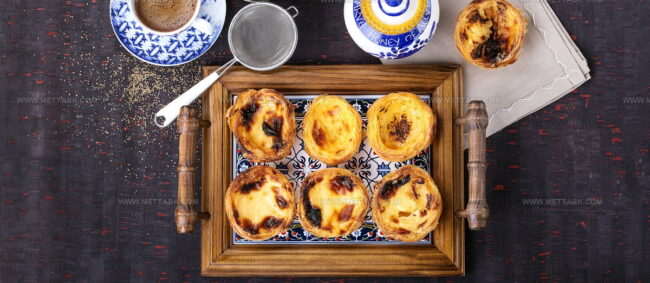

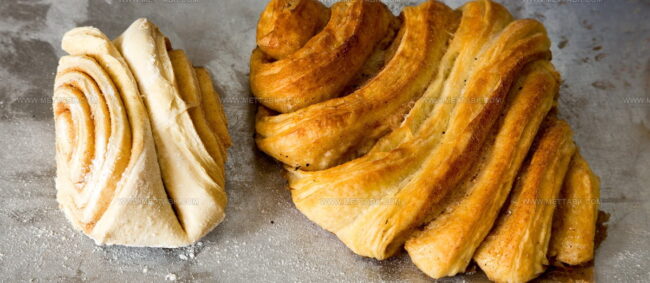
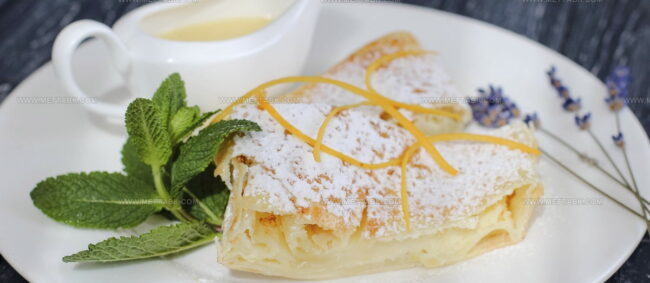
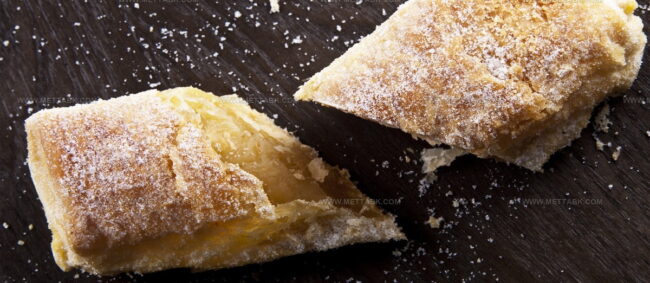
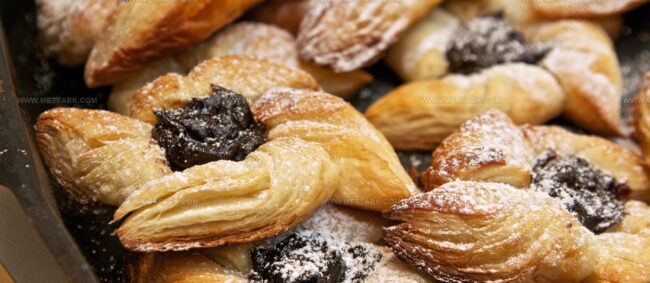
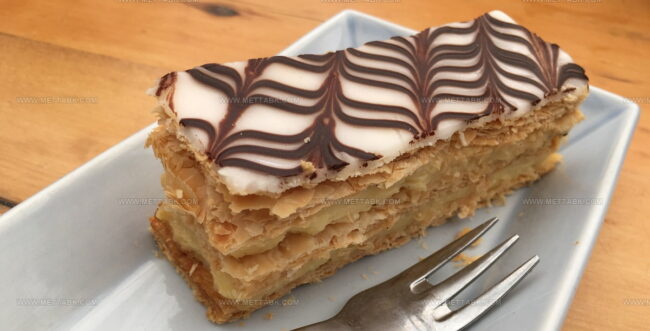
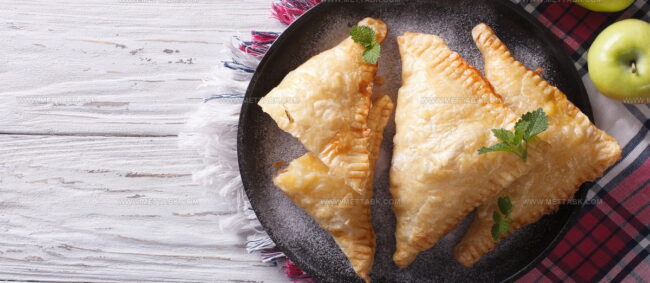

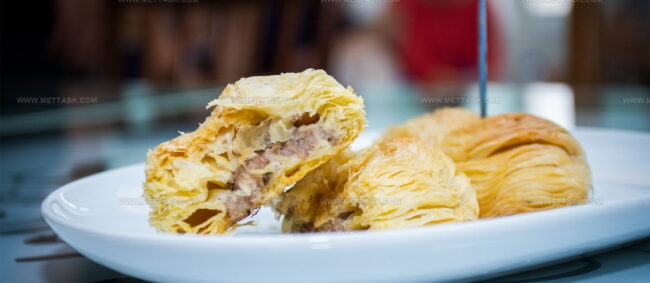
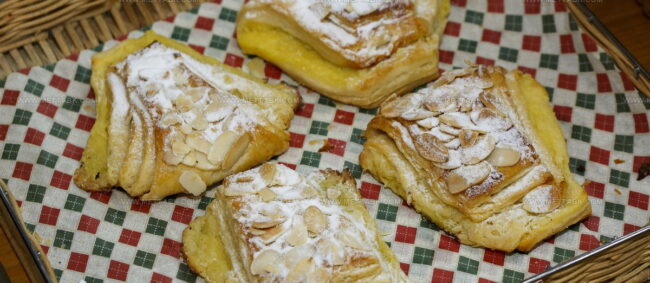


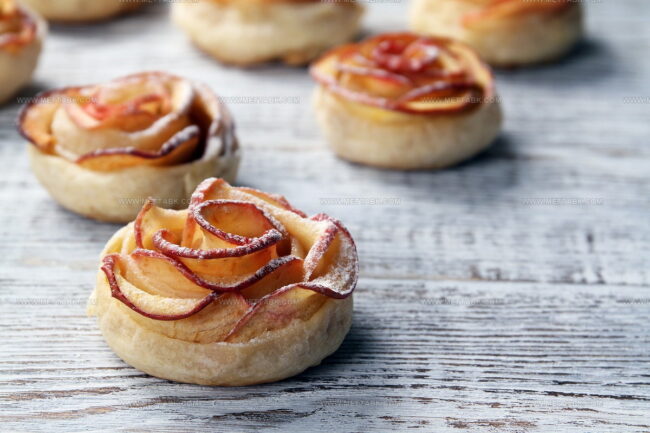
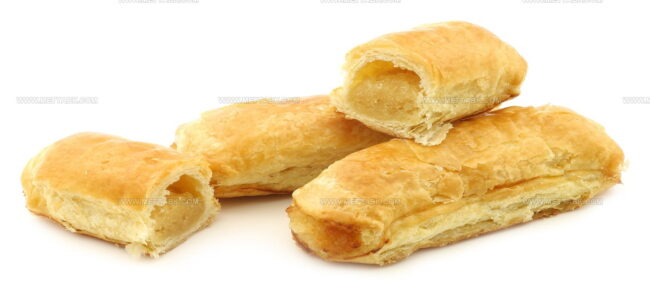
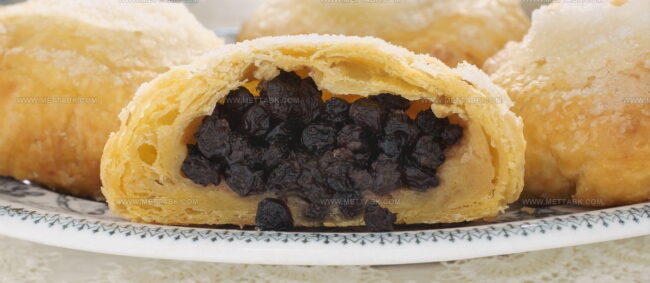
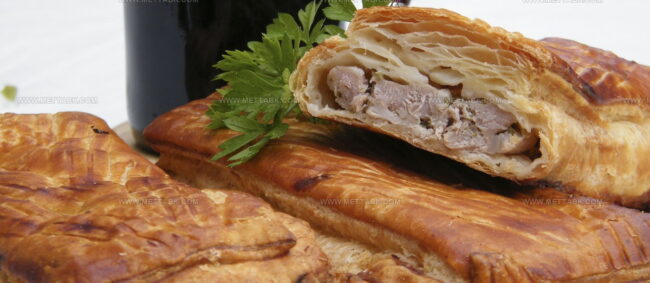
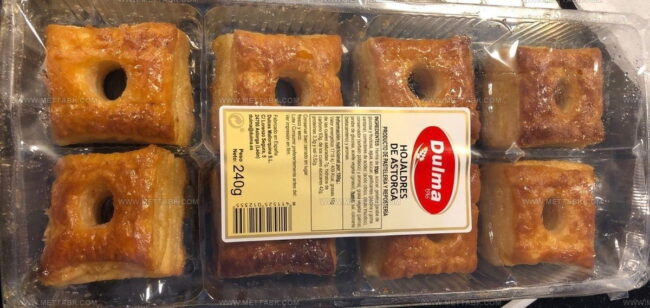

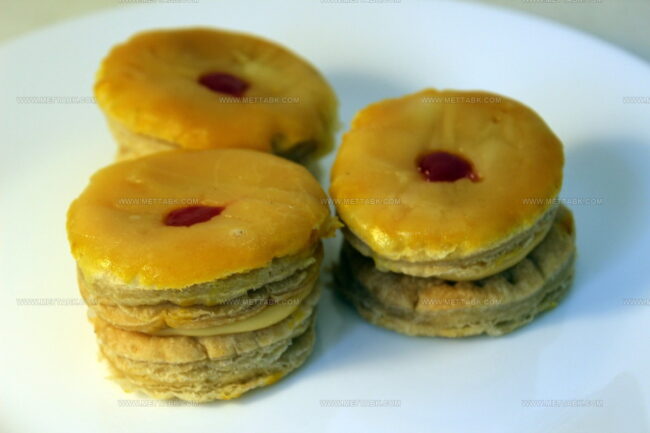
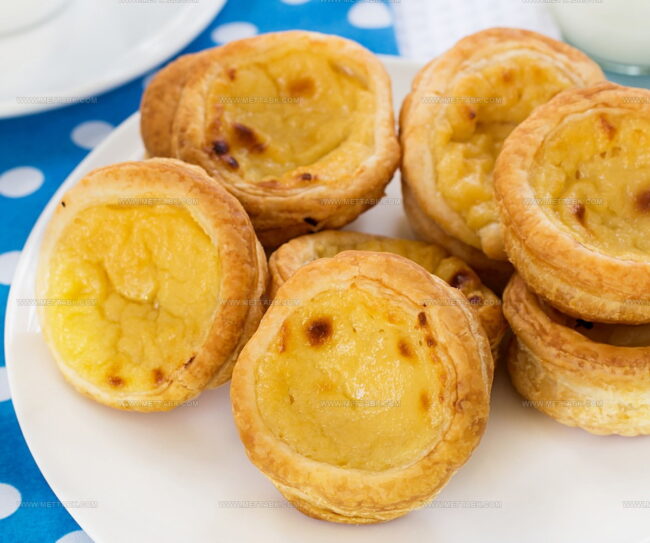
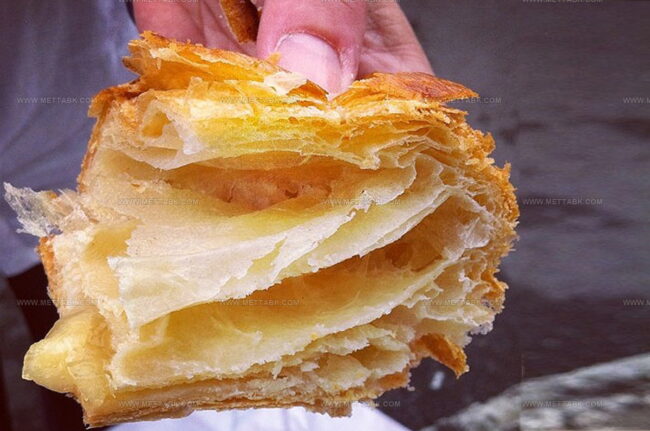
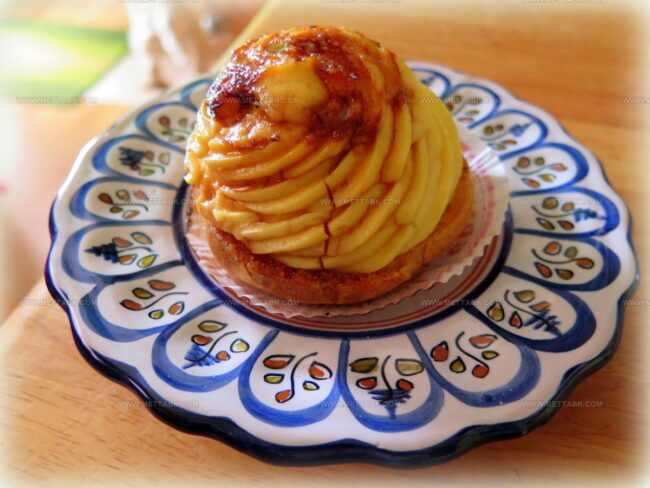
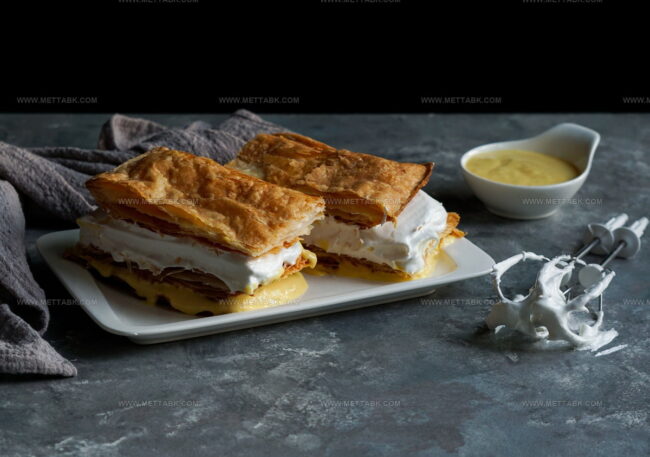

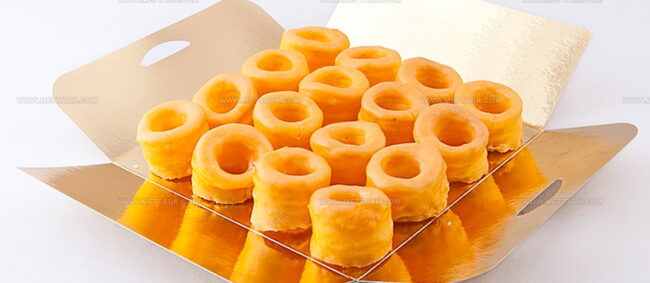
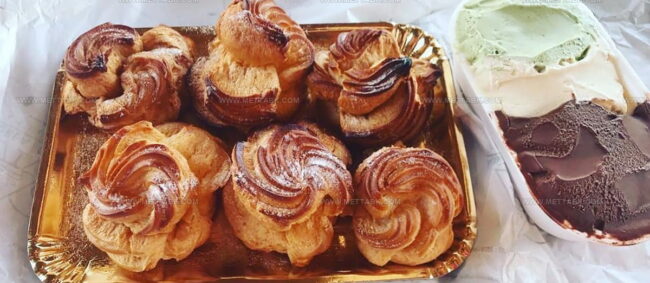
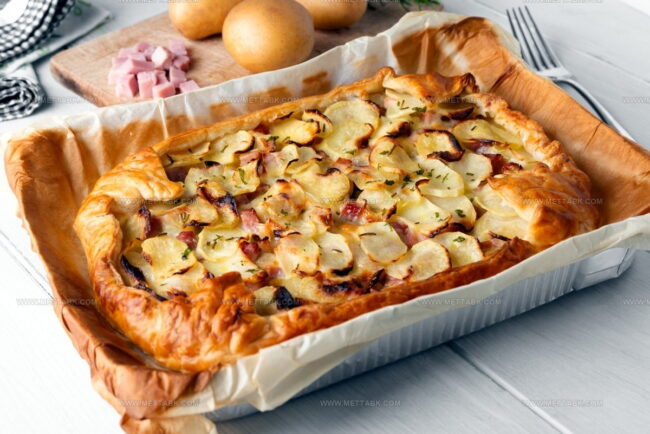
Clara Bennett
Contributing Recipe Developer & Food Writer
Expertise
Baking and Pastry Development, Gluten-Free and Allergy-Friendly Recipe Creation, Culinary Storytelling and Food Journalism, Recipe Testing and Standardization, Southern Comfort Foods and Modern Twists
Education
Sullivan University – National Center for Hospitality Studies
Associate Degree in Culinary Arts
Focus: Baking and Pastry Arts, Recipe Testing, and Culinary Journalism.
Clara specialized in crafting desserts that blend classic Southern comfort with modern techniques, while developing strong writing skills to tell the story behind every dish.
Lane Community College (Certificate Program)
Certificate in Food Writing and Photography
Focus: Culinary storytelling, recipe formatting, food styling, and visual presentation.
Clara’s love of baking started young, powered by homemade pies, biscuits, and stories passed around the family table.
After earning her degree at Sullivan University and a food writing certificate at Lane Community College, she turned her passion into a craft: sharing recipes that are simple, soulful, and always full of heart.
She’s big on bold flavors, flexible ideas, and creating sweets that fit any table (yes, even if you’re gluten-free). When she’s not baking, you’ll find her wandering farmers’ markets, styling food for the next photo shoot, or working on her ever-growing recipe journal.